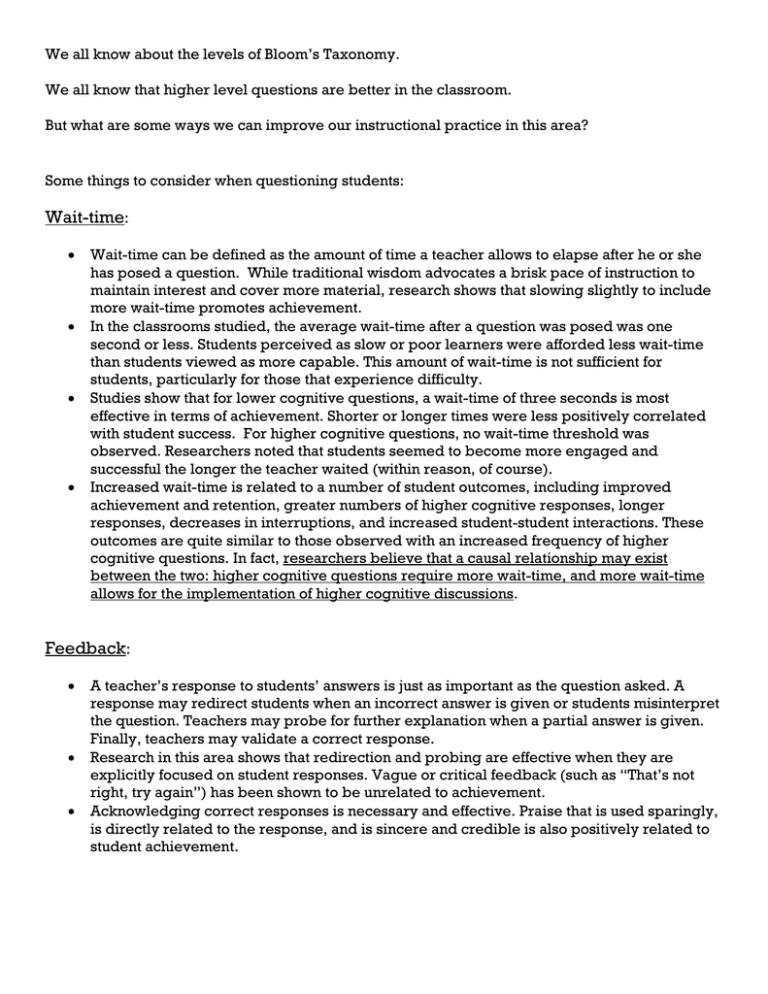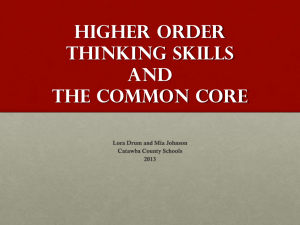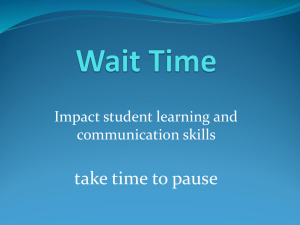We all know about the levels of Bloom’s Taxonomy.
advertisement

We all know about the levels of Bloom’s Taxonomy. We all know that higher level questions are better in the classroom. But what are some ways we can improve our instructional practice in this area? Some things to consider when questioning students: Wait-time: Wait-time can be defined as the amount of time a teacher allows to elapse after he or she has posed a question. While traditional wisdom advocates a brisk pace of instruction to maintain interest and cover more material, research shows that slowing slightly to include more wait-time promotes achievement. In the classrooms studied, the average wait-time after a question was posed was one second or less. Students perceived as slow or poor learners were afforded less wait-time than students viewed as more capable. This amount of wait-time is not sufficient for students, particularly for those that experience difficulty. Studies show that for lower cognitive questions, a wait-time of three seconds is most effective in terms of achievement. Shorter or longer times were less positively correlated with student success. For higher cognitive questions, no wait-time threshold was observed. Researchers noted that students seemed to become more engaged and successful the longer the teacher waited (within reason, of course). Increased wait-time is related to a number of student outcomes, including improved achievement and retention, greater numbers of higher cognitive responses, longer responses, decreases in interruptions, and increased student-student interactions. These outcomes are quite similar to those observed with an increased frequency of higher cognitive questions. In fact, researchers believe that a causal relationship may exist between the two: higher cognitive questions require more wait-time, and more wait-time allows for the implementation of higher cognitive discussions. Feedback: A teacher’s response to students’ answers is just as important as the question asked. A response may redirect students when an incorrect answer is given or students misinterpret the question. Teachers may probe for further explanation when a partial answer is given. Finally, teachers may validate a correct response. Research in this area shows that redirection and probing are effective when they are explicitly focused on student responses. Vague or critical feedback (such as “That’s not right, try again”) has been shown to be unrelated to achievement. Acknowledging correct responses is necessary and effective. Praise that is used sparingly, is directly related to the response, and is sincere and credible is also positively related to student achievement. What can you do? Plan and write out the questions to be used in a lesson. How many are lower cognitive questions? Higher cognitive questions? Is the percentage appropriate for the age and ability level of your students? Anticipate possible student responses, especially partially correct or incorrect ones. How will you probe for further information or redirect? o Counting to ten in your head is a good start for wait time after you pose a question. o And before moving on or giving an indication that the answer was correct or incorrect, restate the question in a different way and then allow another ten count of wait time. Instead of stating if an answer is correct or incorrect, follow up with “Who can add to that?” or “Johnny, give me some additional information.” This way, everyone continues to think about the original question and the student who answered isn’t embarrassed if they were incorrect. Make sure you are using a random way to call on students (i.e. pick sticks) so that all students are engaged and thinking about each question. Some teachers don’t allow students to raise their hands when a question is asked – that way none of the students can rely on someone else to know the answer. If you ask a question and no one seems to know the answer, allow students to talk in pairs or in a small table group. Then ask the question again. This allows them to self-evaluate their knowledge through peer discussion before giving up on the topic. Ask a colleague to observe a lesson, paying particular attention to the types of questions and student responses. Meet to discuss the observations and plan for improvement. Videotape yourself teaching a lesson. When you watch, record your wait-time for each question. Also note if you provide longer wait-times to certain students. Or examine your feedback. Are you specific and focused on the students’ responses? SOURCE




